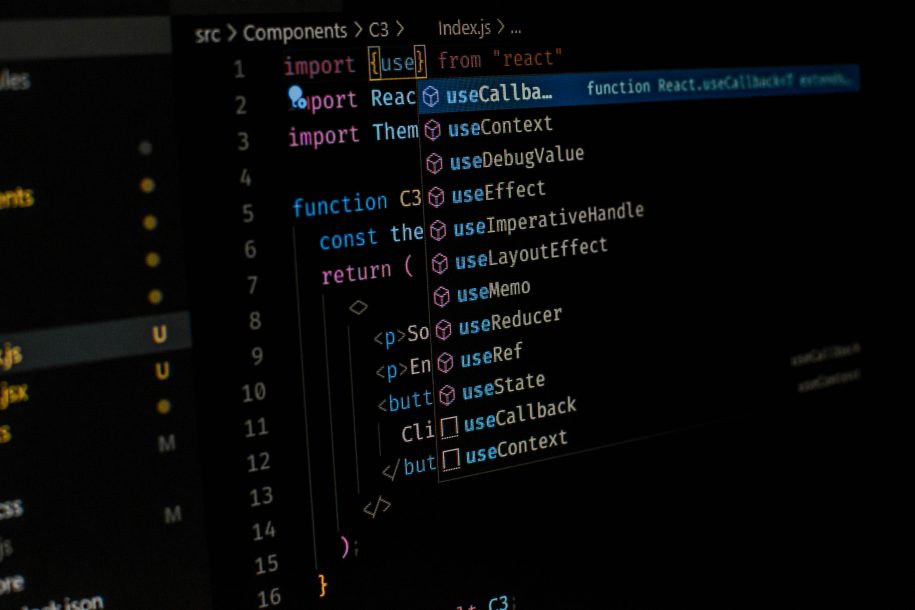Introduction
In the world of software engineering, the term “backlog” holds significant importance. It is a key component of project management and serves as a roadmap for the development team. Additionally, the backlog encompasses a list of tasks, requirements, and features that need to be completed in a project. This comprehensive guide will delve into the concept of backlog in software engineering, its various types, the importance of backlog management, and best practices for effective backlog management.
What is Backlog in Software Engineering?
In software engineering, a backlog comprises a prioritized list of tasks, features, and requirements that the development team needs to complete during the development process. It serves as a repository for all the work that the development team needs to do, providing them with a clear direction. The backlog is constantly evolving and can include items such as bug fixes, user stories, enhancements, and technical debt.
Understanding the Importance of Backlog Management
Effective backlog management is crucial for the success of any software engineering project. It allows the development team to prioritize tasks, allocate resources, and stay organized throughout the development process. By maintaining a well-kept backlog, the team can ensure they prioritize and complete the most important and valuable items first, resulting in increased customer satisfaction and project success.
Proper backlog management also enables effective communication and collaboration within the development team and with stakeholders. It provides transparency into the progress of the project and allows stakeholders to provide input and make informed decisions. Additionally, backlog management ensures that the development team remains focused on delivering value to the end-users by continuously refining and reprioritizing the backlog.
Types of Backlogs in Software Development
There are different types of backlogs in software development, each serving a specific purpose. The two main types of backlogs are product backlog and sprint backlog.
- Product Backlog: The product backlog comprises a high-level list of features, requirements, and user stories that the team needs to implement over the course of the project. Stakeholders and market changes constantly refine and reprioritize it based on their evolving needs.
- The product backlog serves as a strategic roadmap for the entire project and provides a long-term vision.
- Sprint Backlog: The team derives the sprint backlog from the product backlog, containing a list of tasks they need to complete during a specific sprint. The team creates it as a time-bound subset of the product backlog before the start of each sprint.
- The sprint backlog ensures that the development team stays focused on the tasks at hand and delivers the planned work within the sprint timeline.
What is an Example of Backlog?
To better understand the concept of backlog, let’s consider an example. Imagine a software development project aimed at creating a mobile banking application. The product backlog for this project might include items such as user registration, account balance display, fund transfer functionality, transaction history, and security enhancements.
The team would further break down these items into smaller, actionable tasks in the sprint backlog. For instance, the sprint backlog would include tasks such as designing the registration form, implementing validation rules, and integrating with the backend system under the user registration feature.
Backlog Grooming and Prioritization Techniques
Backlog grooming is an essential part of backlog management. It involves regularly reviewing, refining, and reprioritizing the backlog to ensure that it remains up-to-date and aligned with the project goals. During backlog grooming sessions, the development team and stakeholders collaborate to clarify requirements, add new items, remove obsolete ones, and estimate effort for each item.
Prioritization techniques play a crucial role in backlog management. One widely used technique is the MoSCoW method, which categorizes items into four priority levels: Must have, Should have, Could have, and Won’t have. This helps in identifying critical features that are essential for the project’s success.
Another popular technique is the Weighted Shortest Job First (WSJF) method, which assigns a weight to each item based on its business value, time criticality, risk reduction, and effort required. The team prioritizes items with the highest WSJF score first, ensuring they complete the most valuable work early on.

Agile Methodology and its Relation to Backlog Management
Agile methodology is closely tied to backlog management. This methodology promotes an iterative and incremental approach to software development, where the backlog serves as the foundation for planning and execution. Stakeholder feedback and changing requirements continuously refine and reprioritize the product backlog, enabling flexibility and adaptability in the development process.
Scrum, a popular Agile framework, places great emphasis on backlog management. The product owner is responsible for creating and maintaining the product backlog, while the development team collaborates with stakeholders to refine and estimate items. The team creates the sprint backlog during the sprint planning meeting, ensuring they have a clear understanding of the work to be done in each sprint.
What is the Difference Between User Story and Product Backlog?
While both user stories and product backlog are integral parts of backlog management, they serve different purposes. A user story is a concise description of a desired feature or functionality from the perspective of an end-user. During agile development, teams use it to elicit conversations and capture requirements, focusing on the “what” and “why” of a requirement.
On the other hand, the product backlog comprises a comprehensive list of all the features, requirements, and user stories that the team needs to implement in a project. Stakeholders constantly refine and reprioritize it, providing a holistic view of the work to be done. The team typically includes user stories in the product backlog and breaks them down into smaller tasks in the sprint backlog.
What Does Backlog Mean in Scrum?
In the Scrum framework, the backlog holds immense significance. It is divided into two main types: product backlog and sprint backlog. Over time, the team develops the product backlog, which is a dynamic list of features, enhancements, and bug fixes that need development. It represents the overall vision and goals of the project and is owned by the product owner. Stakeholder feedback, market trends, and changing requirements continuously refine and reprioritize the product backlog. On the other hand, the team creates the sprint backlog as a subset of the product backlog, containing the user stories and tasks to be completed in a specific sprint. It is owned by the development team and is created during the sprint planning meeting. The sprint backlog provides a clear plan for the team and ensures that they stay focused on delivering the work committed for the sprint.
Creating and Maintaining a Backlog in Code Development
Creating and maintaining a backlog in code development is crucial for efficient project management. The development team uses various tools and techniques to manage the backlog effectively.
One common approach is to use issue tracking systems like Metridev to create and track backlog items. These tools provide features for adding, organizing, and prioritizing tasks, as well as assigning them to team members. They also facilitate collaboration and communication within the team, ensuring that everyone is on the same page.
Another technique is to use version control systems like Git. This allows developers to track changes to the codebase and manage different versions of the software. By using branches and pull requests, teams can create separate backlogs for specific features or bug fixes. This makes it easier to manage and track progress.
Best Practices for Effective Backlog Management
To ensure effective backlog management, it is essential to follow some best practices. Firstly, collaboration among all stakeholders, including the development team, product owner, and end-users, is crucial. Regular communication fosters a shared understanding, enabling informed decisions and feedback gathering. Secondly, prioritization is key. Utilizing techniques like MoSCoW or WSJF allows for the identification of critical features, emphasizing early delivery of value. Thirdly, refinement plays a vital role. Regularly updating the backlog ensures alignment with evolving requirements, breaking down large items into manageable tasks with estimated efforts. Additionally, transparency is essential. Making the backlog visible to all stakeholders using accessible tools facilitates clear communication and fosters accountability. Lastly, continuous improvement is necessary. Evaluating and learning from past experiences enables adaptation to meet the project’s evolving needs, ensuring ongoing effectiveness in backlog management.
Tools and Software for Backlog Tracking and Collaboration
Numerous tools and software are available to aid in backlog tracking and collaboration. These tools provide features for creating, organizing, and prioritizing backlog items, as well as facilitating communication and collaboration within the team. Some popular tools include:
- JIRA: JIRA is a widely used issue tracking system that allows teams to create and manage backlogs, track tasks, and collaborate on projects. It offers a range of features for agile project management, including Scrum and Kanban boards.
- Trello: Trello is a visual project management tool that uses boards, lists, and cards to organize tasks. It provides a simple and intuitive interface for managing backlogs and tracking progress.
- Azure DevOps: Azure DevOps is a comprehensive set of development tools that includes backlog management features. It offers capabilities for creating and tracking backlogs, managing sprints, and integrating with version control systems.
- GitHub: GitHub is a version control system that also provides features for managing backlogs. It allows teams to create and track issues, assign tasks to team members, and collaborate on code development.
Which Best Describes Product Backlog?
We can best describe the product backlog as a dynamic and evolving list of features, requirements, and user stories that the team needs to implement in a software development project. It represents the overall vision and goals of the project and provides a roadmap for the development team. Stakeholder feedback, changing requirements, and market trends continuously refine and reprioritize the product backlog.
Common Challenges in Backlog Management and How to Overcome Them
Backlog management poses various challenges, necessitating strategies to address them effectively. Firstly, the lack of clarity in backlog items can impede the development team’s understanding and estimation. To mitigate this issue, it is essential to ensure that each item is well-defined, incorporating clear acceptance criteria. Secondly, changing requirements can result in a constantly evolving backlog. Embracing the Agile mindset and maintaining flexibility are crucial in adapting to such changes. Regular communication with stakeholders facilitates the reprioritization of backlog items as needed. Moreover, an overloaded backlog can hinder prioritization and management efforts. By consistently reviewing and eliminating obsolete or low-value items, the backlog can remain lean and focused. Lastly, the lack of stakeholder engagement poses a significant challenge. Engaging stakeholders through regular communication, feedback gathering, and collaborative decision-making ensures that the backlog aligns with their evolving needs and enhances overall success.
The Role of Backlog in Project Success
The backlog plays a vital role in the success of a software engineering project. It provides a clear direction for the development team, ensures that the most valuable work is completed first, and allows for effective communication and collaboration. By regularly refining and reprioritizing the backlog, the team can adapt to changing requirements and deliver value to the end-users.
A well-maintained backlog also enables efficient resource allocation, reduces project risks, and improves overall project planning. It serves as a central repository for all work to be done and allows for transparency and accountability. With effective backlog management, projects can stay on track, meet customer expectations, and achieve success.
Conclusion and Key Takeaways
Backlog management is an integral part of software engineering. It provides a roadmap for the development team and ensures effective resource allocation. It also enables collaboration and communication within the team and with stakeholders. By understanding the different types of backlogs, prioritization techniques, and best practices, teams can effectively manage their backlogs and increase the chances of project success.
Key takeaways from this comprehensive guide include the importance of backlog management in software engineering, the relationship between Agile methodology and backlog management, the difference between user stories and the product backlog, and the best practices for creating and maintaining a backlog. By following these principles and utilizing appropriate tools and techniques, teams can streamline their development process and deliver high-quality software.
To learn more about effective backlog management and other software engineering practices, read our article Operation Management Engineering: Maximizing Success.









Leave a Reply